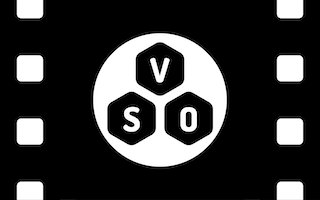Founded in 2022, the Veovera Software Organization (VSO) is a dedicated not-for-profit entity committed to enhancing software technology for the public good. VSO has played a pivotal role in advancing the Real-Time Messaging Protocol (RTMP), notably through collaboration with industry leaders such as Adobe, YouTube, Twitch and others. Our collective efforts focus on refining and broadening the capabilities of RTMP to ensure it meets the evolving demands of modern media streaming.
As the media streaming landscape continues to evolve, the VSO has emerged as a pivotal force in modernizing the RTMP/FLV protocol, a cornerstone of streaming technology that had remained largely unaltered for over two decades. Through our pioneering initiatives, we have introduced initial enhancements “enhanced-rtmp-v1” (or "enhanced-rtmp-v1.pdf”) and the latest alpha specification, "enhanced-rtmp-v2" (or "enhanced-rtmp-v2.pdf”). This key publication outlines substantial advancements to legacy RTMP, including:
- Advanced Audio Codecs: Integration of codecs such as AC-3, E-AC-3, Opus, and FLAC, catering to diverse audio quality and compression needs, ensuring compatibility with modern audio playback systems.
- Multichannel Audio Configurations: Addition of multichannel audio configurations, enhancing the auditory experience without sacrificing compatibility with existing setups.
- Advanced Video Codecs: Integration of video codecs like VP8, VP9, HEVC, and AV1 with High Dynamic Range (HDR) support, catering to modern displays and content requirements.
- Video Metadata: Addition of VideoPacketType.Metadata, expanding the range of supported video metadata types.
- FourCC Signaling: Addition of FourCC signaling for the advanced codecs mentioned above, as well as for legacy AVC, AAC, and MP3 AV codecs.
- Multitrack Capabilities: Introduction of audio and video Multitrack capabilities, allowing for the management and processing of multiple media streams concurrently enhancing the overall media experience.
- Reconnect Request Feature: Implementation of a Reconnect Request feature, aimed at improving connection stability and resilience.
These enhancements are designed to align RTMP with contemporary streaming technology standards, ensuring its relevance and efficacy in today's digital landscape.
For the latest insights and updates on these exciting developments, we invite you to explore our news feed.
In the spirit of open collaboration and continuous improvement, we highly value the community's feedback and contributions. Our work, including detailed documentation, the latest enhancements, and avenues for community engagement, is hosted on GitHub. We invite you to join our efforts by visiting our GitHub repository at <https://github.com/veovera/enhanced-rtmp>. Here, you can access our publications, contribute to the project, and share your insights by creating new issues.
Together, we can shape the future of media streaming technology, ensuring that RTMP remains innovative. Your participation and feedback are crucial to our ongoing endeavors.
For information on how to join Veovera Organization please contact <mailto:[email protected]>.



